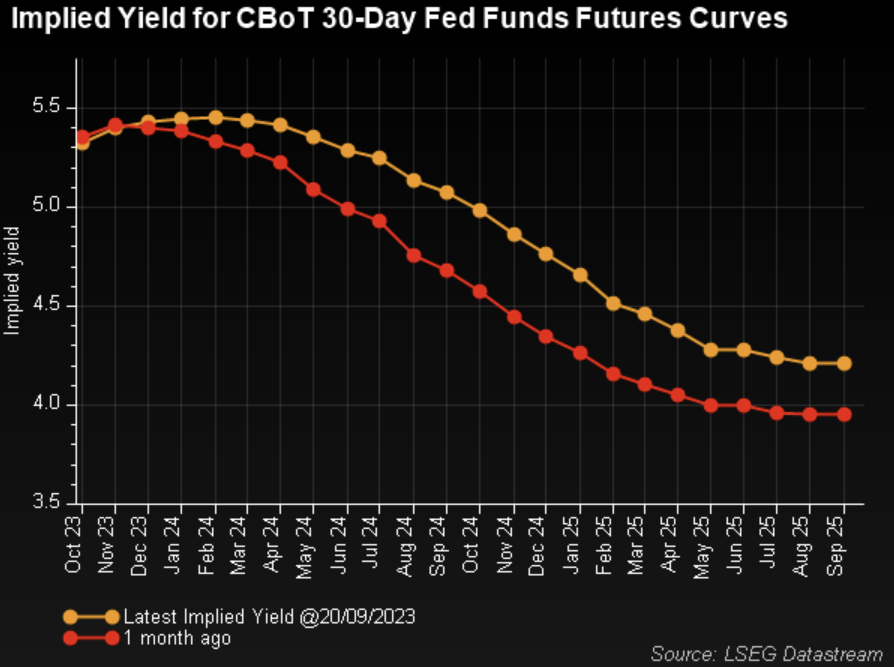The US Fed: Good news is still bad news
A ‘hawkish’ pause.
That’s what some commentators are calling what the Fed did this week, when it left the Fed funds rate, its official interest rate benchmark, unchanged. And judging by the immediate market reaction, financial market participants thought so too.
Bond yields have shot up, and the US dollar index has hit its highest in over six months, while share markets weakened. All of these are the hallmarks of a “hawkish” reaction, or a central bank inclined to raise rates further.
But if you take a look at the Fed’s new forecasts, it actually paints a much more optimistic view of the economy. Economic growth is now expected to be much stronger in 2023 and 2024. The Fed is now expecting the economy to grow at 2.1% and 1.5% in 2023 and 2024, (previously 1.0% and 1.1%), respectively. The unemployment rate is also expected to be lower, at 3.8% in 2023 and 4.1% in 2024 (previously 4.1% and 4.5%, respectively). On top of this, core inflation was also revised lower from 3.9% to 3.7% for 2023, although in 2024 forecasts are unchanged.
To sum this up, the Fed is now expecting stronger economic growth, a lower unemployment rate for around the same amount of inflation!
This is a goldilocks scenario, if we ever saw one, so why have investors reacted in a negative way?
The answer to this question lies in expectations for interest rates.
Market participants were anticipating a potential peak in interest rates and for interest rates to come down next year. Indeed, financial markets had ‘priced in’ a significant amount of rate cuts over 2024, equivalent to 100 basis points at one point in the past few weeks. That’s a significant departure from what the Fed has estimated. More than half of FOMC members expect another rate hike this year, and the median expectation for the fed funds rate in 2024 is at 5.125%. That’s only 25 basis points lower than the current 5.25-5.50% range.
Consequently, after the Fed’s meeting, pricing has moved closer towards the Fed’s expectations, and resulted in the rise in bond yields and the US dollar, and the weakness in the equity market. See the upward shift in the implied yield curve based on fed funds futures over the past month, which estimates market pricing for the fed funds rate:

Financial markets are now ‘pricing in’ around 60 basis points of cuts for next year.
You might notice that market pricing is still far from what the Fed is expecting, which is only around 25 basis points of cuts for next year.
Which means that there is a risk that we see further weakness in the share market, strength in the US dollar and even higher bond yields.
Of course, there is also the possibility that markets have it right, and the Fed finds that it doesn’t need to tighten anymore.
But that would probably require both renewed weakness in inflation and the economy, which near-term indicators are not suggesting at this point, or over the next few months.
A major positive from this Fed meeting was a greater confidence that a soft landing could occur – that is inflation returning to target without economic growth slowing too significantly. However, at the same time, the Fed also sees that the stronger-than-expected economy could pose an upside risk to inflation, even though near-term inflation outcomes have indeed been better than expected. A stronger than expected economy could impact on the inflation outlook a couple of years down the track.
The fact that the Fed sees a greater chance of a soft landing is great news. But without signs that the economy isn’t slowing more significantly, interest rates aren’t likely to come back down in a hurry either. Unfortunately, that means further signs of strength in the economy might still elicit negative reactions from financial markets. Good news is still bad news.
5 topics